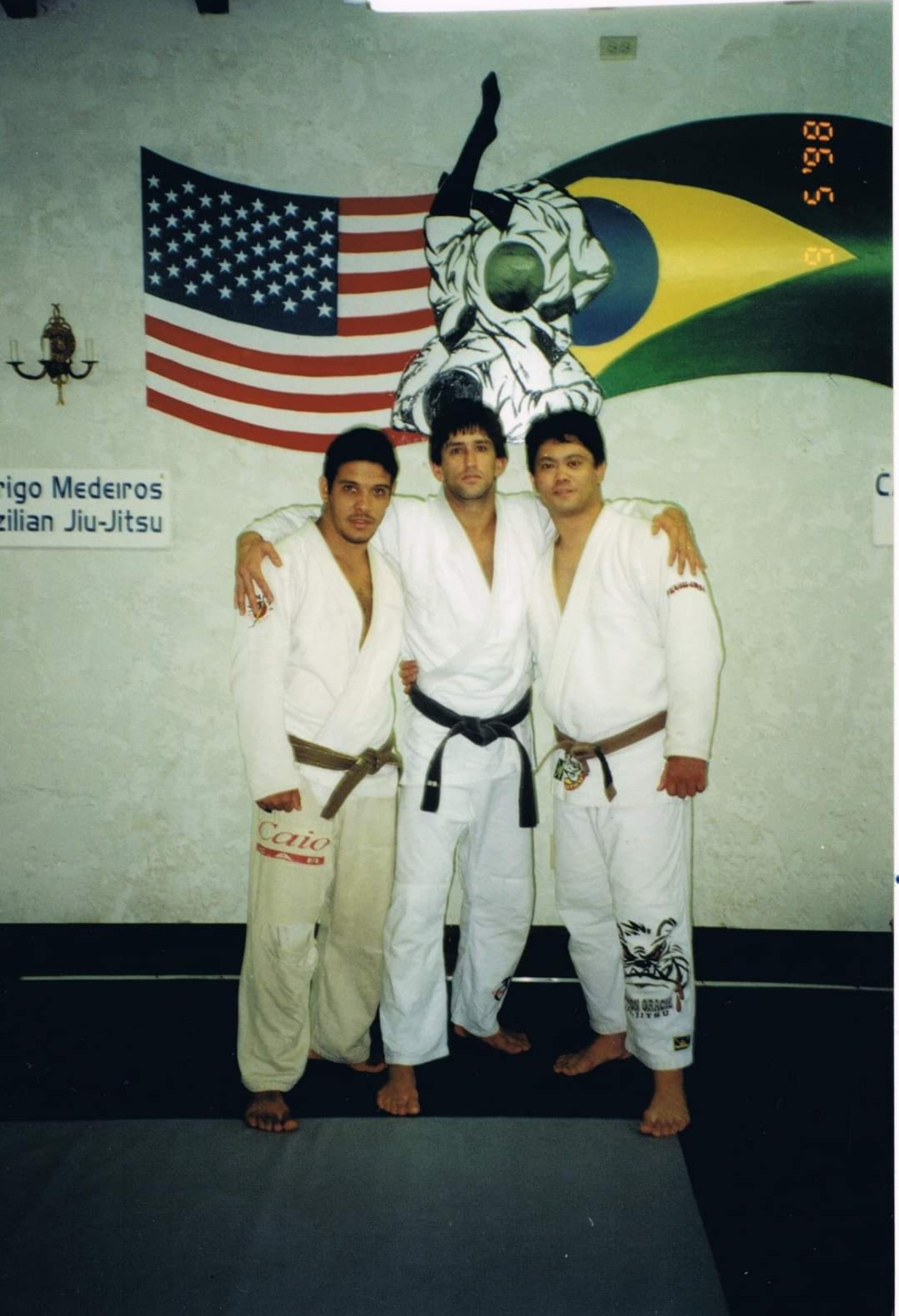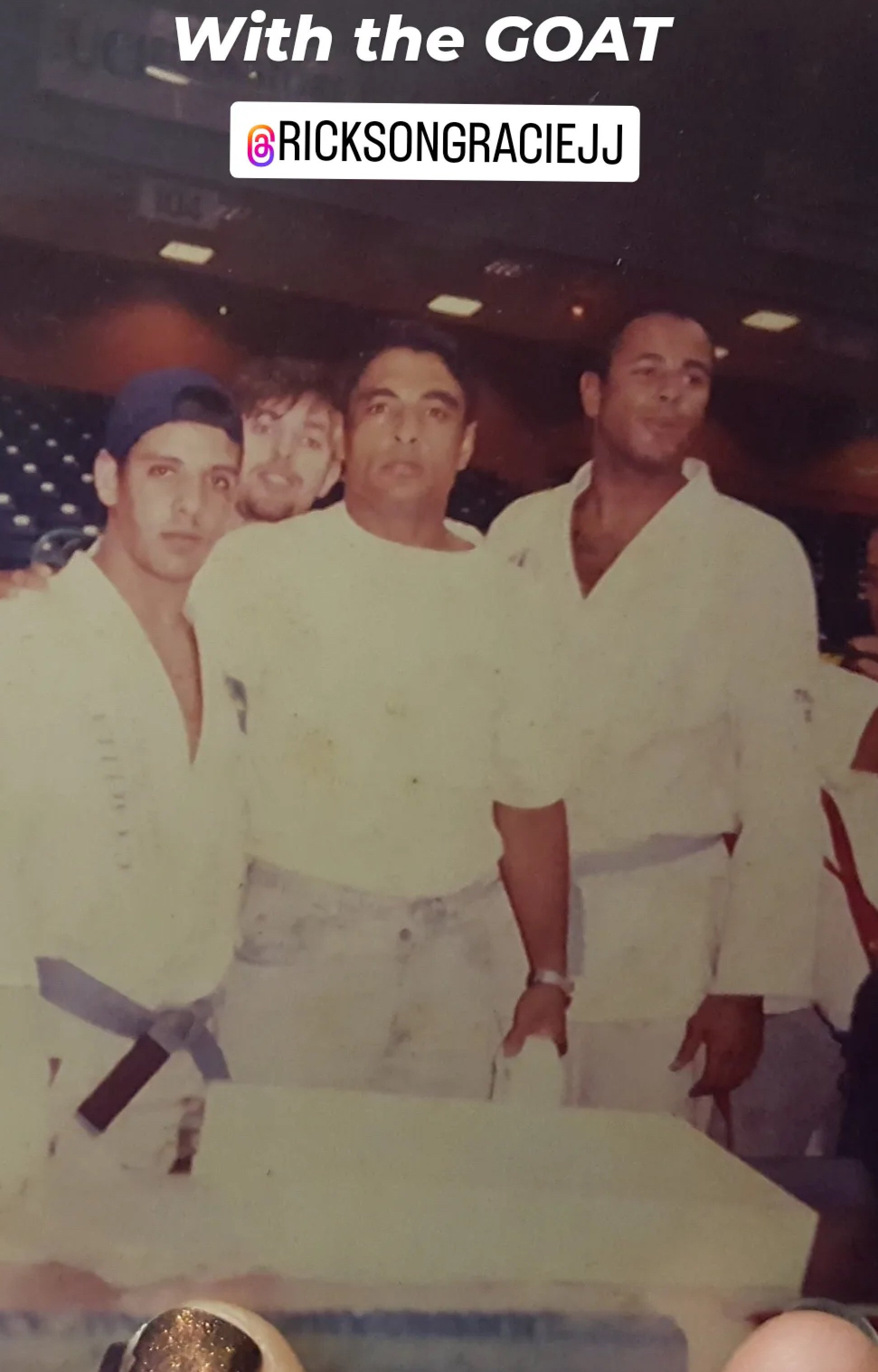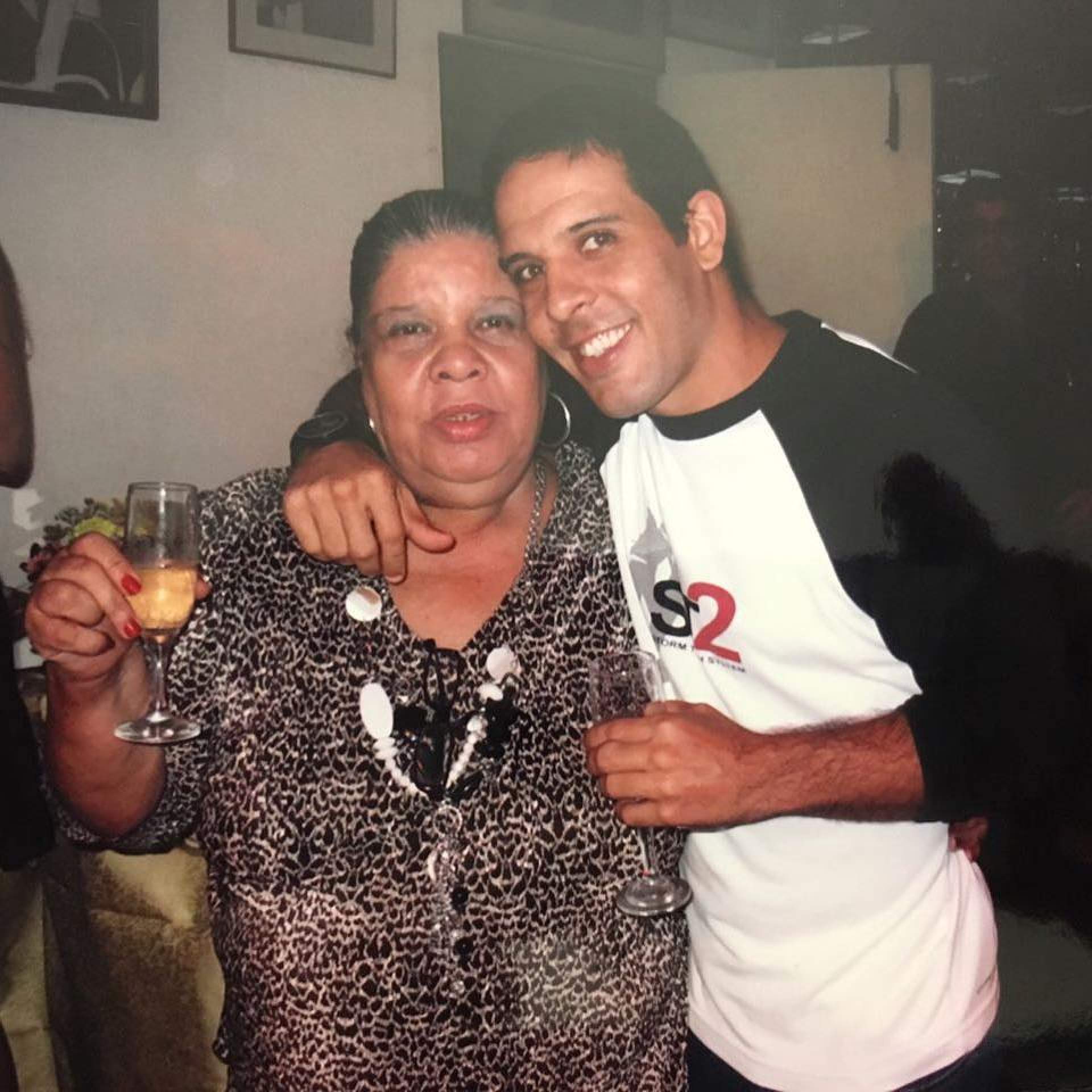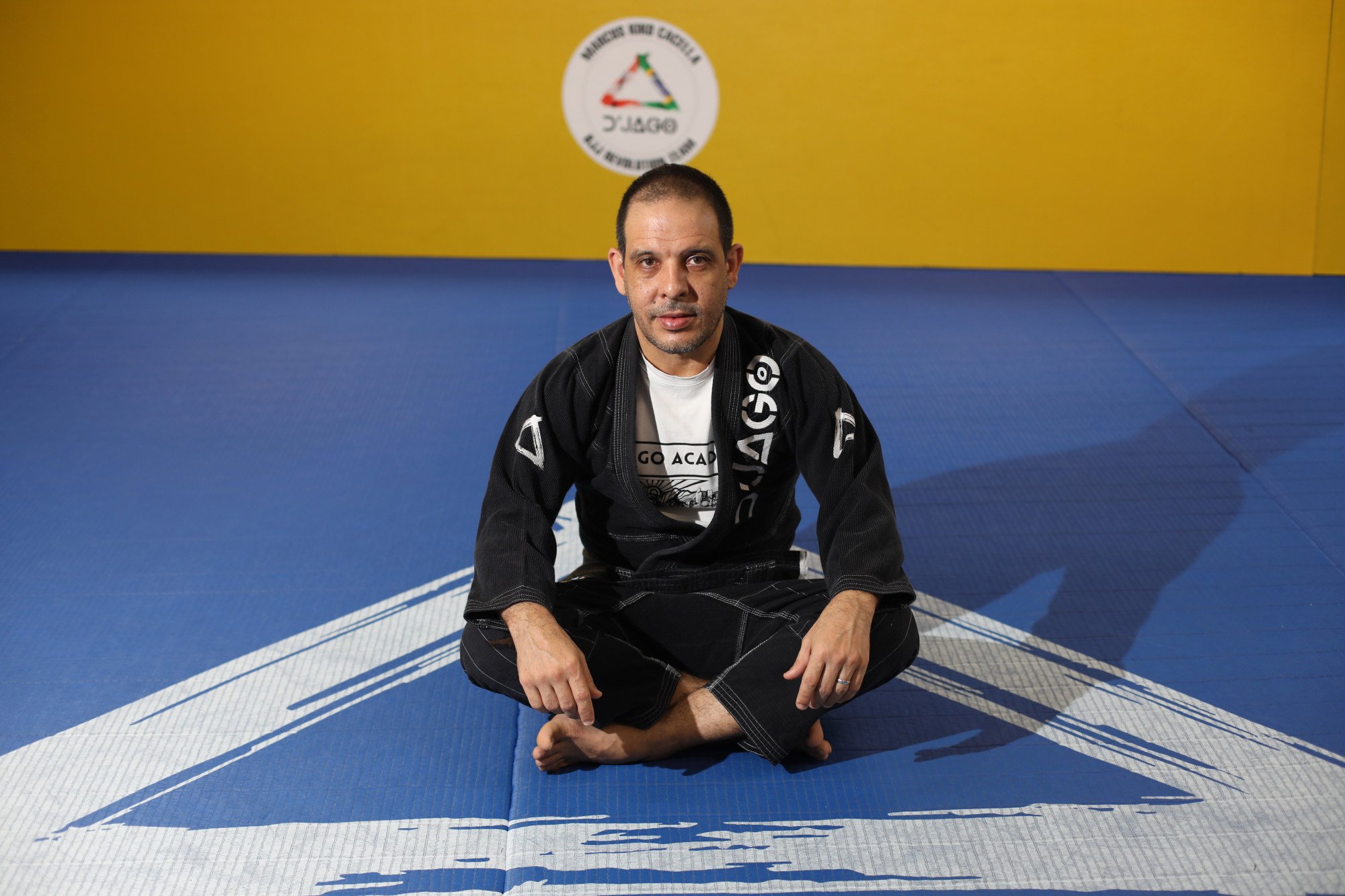
- The founder and head coach at D’Jago BJJ Academy, Kiko Cacella discovered Brazilian jiu-jitsu at 15 and immediately fell in love with the sport
I was born in 1976, in Rio de Janeiro, and grew up in Leblon, a small neighbourhood where everyone knew each other. My mum worked for the government and my dad worked at the marina, which was run by the state.
My brother, who is 11 years older than me, and my younger sister lived with us at home. I have many half siblings from my father’s previous relationships.
We lived two or three blocks from the beach, and I spent a lot of time playing outside on the street and surfing. I was very sporty; I started judo when I was eight years old and was on the local football team and swam.
Surfing was my passion and I skipped school to surf. I loved being in nature and connecting to it.
It’s complicated
There were lots of fights at home. My brother went down the drugs and alcohol road in his teens.
My dad didn’t approve of him bringing his girlfriend home and my mum arranged for him to live in a room at the back of the house with his girlfriend without my father knowing. The girlfriend got pregnant and had a son. It was complicated.

There were a lot of physical fights between my father and him. When I was young, if my brother wasn’t happy, he’d take his frustration out on us. He would hit me. It could be very scary.
Falling in love
In Brazil, when you are 14, you can work for four hours in the morning and go to school in the afternoon. I started working at the Banco do Brasil, running errands and delivering mail.
When I was 15 a friend, Rodrigo Medeiros, who was six years older than me and also a surfer, invited me to try Brazilian jiu-jitsu. I immediately fell in love with the sport.
I worked at the bank in the morning, then went to school and then to the Nova Geração BJJ academy to train. I used the money I earned to pay for my training.
Life saver
Gradually, I stopped going to school and did jiu-jitsu in the afternoons and evenings. I thought about jiu-jitsu all day. With jiu-jitsu, I could protect myself.
My talent was recognised. Within three months I had my blue belt and was encouraged to go to competitions. My confidence at home started getting better.
If not for jiu-jitsu I could have gone down the same road as my brother.
Teenage father
I met Luciana when we were both 14. She and her brother started training in jiu-jitsu and we hung out together in the same group of friends.
There wasn’t a lot of sex education in Brazil and we were just teenagers when she got pregnant. My son Diego was born in 1994.
Luciana and I tried to get back together, but we were too young. Her mother and grandmother and my mother stepped in to support. My mum wanted to me to work for the government, but I wanted to do something related to sport and there were often arguments about that.

When I was 18, I stopped working at the bank and started teaching at the academy. In 1995, I competed in the United States, in the first jiu-jitsu competition outside Brazil, and got third place. My father passed away the following year.
The American dream
Rodrigo moved to California to teach jiu-jitsu in 1996. Two years later he invited me to join him. He was like a brother to me. He helped me get out of that tough situation at home.
Moving to California was like a dream, but it was not easy. When you say “California”, people think of palm trees and the beach. We lived in La Habra, in Orange County. There were a lot of gangs. I didn’t speak any English.
The academy was in an old garage and I lived there, which meant sleeping on the jiu-jitsu mats at night. It was a tough time, but it was a good time. I’d wake up, teach a class and then train. There was no shower, just an outside hosepipe with cold water.
We taught all sorts of people including some gang members and cops. People heard about us through word of mouth. I was paid just US$50 a week. Sometimes students brought food for me and we built a community.
Giving back
I was travelling on a tourist visa, so I’d spend six months in the US, then go back to Rio and stay with my mum and see my son.
At the end of 1999, I got my black belt in Rio and stayed there for almost three years to teach kids from a favela in a social project. They were very welcoming to me and I was happy to give back to the community.
Back again
In 2001, I had my first professional MMA fight and won. In 2003, I was offered the chance to have a big fight at the King of the Cage, in California, but that didn’t go so well. I wasn’t well prepared.
It was my first loss and it was in front of my students. I decided to take a break because I wasn’t in a good place mentally and I went back to Brazil.

An older sister’s husband ran a car park company and asked me if I wanted to be a manager. I did it for a year. It was a good experience but stressful and long hours. I put on weight. I was just working to pay bills.
It made me realise how much I missed jiu-jitsu and I went back to the US to teach. I joined the studio of a former student and started training and lost weight and got in shape. I started competing again.
Going legit
In 2006, I moved to Miami to teach jiu-jitsu. I enjoyed it, there were more Brazilians and Latinos there. I was back and forth between the US and Rio. I always made sure not to overstay my visa.
I was very happy in 2009 to get my first work visa. By then I had a strong résumé and could show I was specialised in my field. After that, I had a lot more freedom and could travel more often to competitions around the US.
Bringing Brazilian jiu-jitsu to Asia
In 2011, I had a chance to open a place in Miami with a partner. I was teaching the police.
Sometimes there were so many cop cars and motorcycles outside the place people wondered what was happening. But the business plan wasn’t good, and it didn’t work out and I struggled with my new partner.
By that time, Rodrigo had opened a gym in San Diego. One of his students, a black belt, moved to Singapore. He offered Rodrigo the chance to come to Hong Kong, to bring jiu-jitsu to Asia.
So, in 2012, he opened Epic MMA Club, a 15,000 sq ft (1,400 square metre) gym on Queen’s Road Central. I moved to Hong Kong to help him set it up.
Beaten into submission
It was there that I met Kimberley Carder, in 2014. I asked her out. She jokingly said if we went in the cage and had a fight and I made her submit 10 times in five minutes, we could have a date. We had a sparring session and then went out for ice cream.
After a year in Hong Kong, my mother got really sick, so I went back to Rio to help her for six months. By strange coincidence, the original jiu-jitsu school that Rodrigo opened ended up moving to the ground floor of the building my mum lived in.

My son Diego began training there. He would pop in to see her and she would hang out at the gym. When I was young, she didn’t approve of jiu-jitsu, but she softened.
Epic failure
In 2015, I moved back to Hong Kong to work at Epic. The management had changed and it wasn’t the same place. It ended up shutting down in 2017.
By this time Kim and I were together. My mum got very unwell and I went back to Brazil. After she passed away, Kim came to Rio and stayed with me.
It was a difficult time. I spent a little time teaching in Bali and then moved back to Hong Kong to teach in 2018.
Family business
In 2019, I opened a small studio on Wellington Street, D’Jago BJJ Academy. We grew from six students to 50, kids and adults.
After a couple of years, the building was due to be knocked down and we moved to our current space, on Cochrane Street, in 2021.

As the academy grew, I had the chance to bring Diego to Hong Kong to teach. He’s a black belt. Kim began to get more involved with the administration. She’s a brown belt and working towards a black belt.
Kim and I got married last year. Our daughter, Darcy Mae, was born in March. I knew Kim would be an amazing mum.
Easy train, tough fight
I think we all have a destiny in life, but we have a choice of whether to be good or bad. When you choose the right direction, then good things can come, but life is still tough.
We say, “Easy train, tough fight. Tough train, easy fight”. So, if you go through a hard time and keep going, good things will come to you.
Life is hard. We all have problems, we all have issues. Deal with the issues, don’t make excuses or stop believing in yourself. Keep going.
I’m in a good place now – I have my own gym, I have my wife and son and daughter with me. Things are stable. You can celebrate this, but don’t be lazy, keep going.

